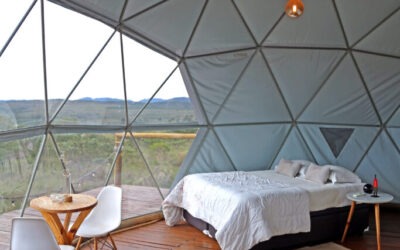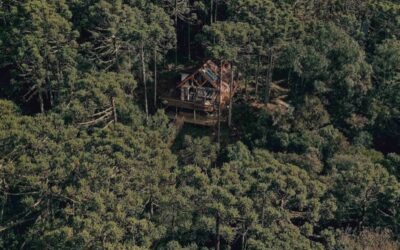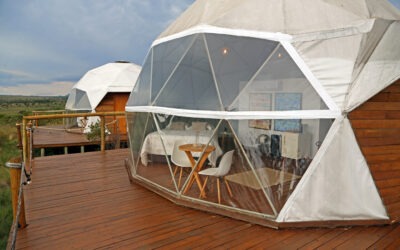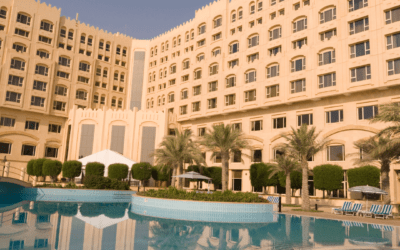Sustainability is a theme that is already part of our daily lives, but do you know how sustainable tourism works? Keep reading this article and understand how to make your trips more sustainable for the planet!
What is sustainable tourism?
Sustainable tourism can be defined as a way of traveling that respects the environment, culture and people. The objective is to preserve local traditions and natural resources, placing the resident communities as protagonists.
The World Tourism Organization (UNWTO) defines sustainable tourism as: “Tourism that fully considers its current and future economic, social and environmental impacts, addressing the needs of visitors, the industry, the environment and local communities”.

Pillars of sustainable tourism
Environmental: in addition to preserving nature, sustainable tourism is concerned with reducing carbon emissions, reducing the use of plastic and creating infrastructure that respects the environment.
Sociocultural: aims to help local communities enjoy the benefits of tourism. An example are the hotels and inns that hire local employees and use food grown by producers and farms in the region.
Economic: financial profit must be achieved taking into account the first two pillars and not seeking profitability at the expense of the environment of the local community.
The 5 P’s of sustainability proposed by the UN Sustainable Development Goals are:
- Planet
- Prosperity
- Partnerships
- Peace
- People
Importance of sustainable tourism
The importance of bringing sustainable practices to our trips is as important as practicing sustainability in our daily lives. After all, the negative impacts of tourism without environmental awareness can compromise the well-being and even the survival of future generations.
Sustainable tourism is important for many reasons: it helps protect wildlife and natural resources, keeps local economies healthy, and creates jobs for locals who run tourism-related businesses.
Sustainable tourism focuses on four main areas: biodiversity conservation; protection of cultural heritage; support for local communities and fair distribution of tourism benefits. Sustainable tourism aims to ensure that everyone involved in the process – from those who live in the community to those who visit – benefits from having visitors pass through their city or area.
Remember: disorderly tourism causes socio-environmental impacts that can cause the extinction of the local culture, the growth of violence rates, real estate speculation and the degradation of the environment.

Sustainable Tourism in Brazil
Brazil is a country of diverse cultures, each with its own unique customs and traditions. It is also a country with a rich natural environment and sustainable tourism in Brazil can benefit both people and the environment.
What if you could enjoy all of Brazil’s natural beauty without harming the environment?
Well you can! Sustainable tourism in Brazil aims to protect the environment while providing a way for people to enjoy it safely.
Sustainable tourism and Ecotourism
The most common form of sustainable tourism in Brazil is ecotourism. This type of tourism focuses on preserving the country’s natural beauty while limiting the human impact on it. Ecotourism can be found all over Brazil, but there are some areas that are especially popular for this type of tourism. Some examples include Chapada dos Veadeiros (in Goiás), Parque Nacional do Iguaçu, Parque Nacional da Tijuca (in Rio de Janeiro) and Reserva Ecológica Mangabal (in Serra da Capivara).
Ecotourism has become increasingly popular in recent decades because it allows visitors to enjoy nature while respecting its biodiversity and ecosystem. Furthermore, it allows people who perhaps have not had access to this type of experience before, to learn more about themselves through nature.
We also have many different types of indigenous cultures that you can learn from the locals who grew up in these communities.
Brazilian Sustainable Tourism Destinations
Chapada dos Veadeiros
Chapada dos Veadeiros is full of waterfalls and canyons, as well as several areas of natural beauty. It is also one of the main attractions for tourists looking to visit Brazil and explore its many natural wonders.
Chapada dos Veadeiros National Park is a UNESCO World Heritage Site in the state of Goiás, Brazil. It is known for its stunning landscapes and biodiversity, as well as its role in sustainable tourism. This recognition came about because of the park’s efforts to create and maintain an ecosystem that is sustainable for both humans and wildlife.
Since 2008, the Chapada dos Veadeiros National Park has been working on its sustainability practices. The aim is to preserve the natural beauty of the area while allowing visitors to enjoy it responsibly.
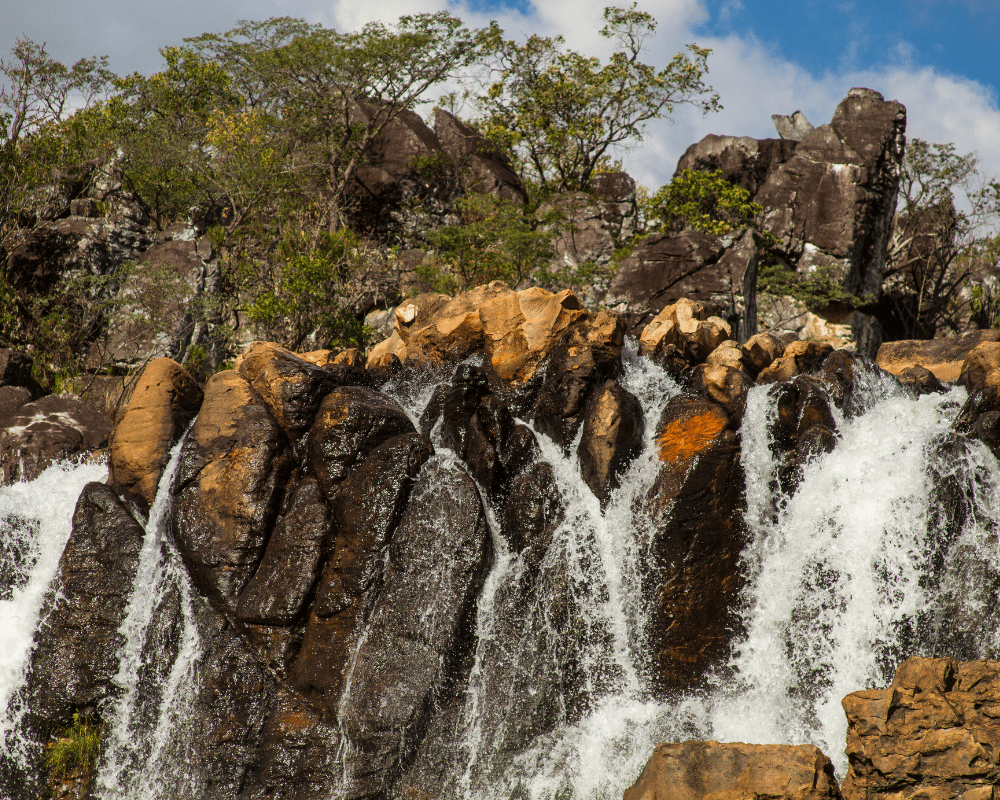
Sustainable tourism is an important aspect of any travel destination, and Chapada dos Veadeiros has a lot to offer visitors who want to experience the region’s natural beauty while helping to preserve the environment. This new approach to tourism aims to preserve this beautiful landscape for future generations, as well as protecting the people who live there.
Chapada dos Veadeiros National Park is one of the most visited national parks in Brazil, with more than 150,000 visitors each year. The park offers hiking trails, camping and beautiful views of rock formations.
In terms of accommodation, tourists can choose from a variety of accommodations ranging from basic lodges and campsites to luxury hotels and glamping sites with spas and restaurants.
Glamping Hidden Treasure
Do you want to experience the nature of Chapada dos Veadeiros in a sustainable way? Come to Glamping!
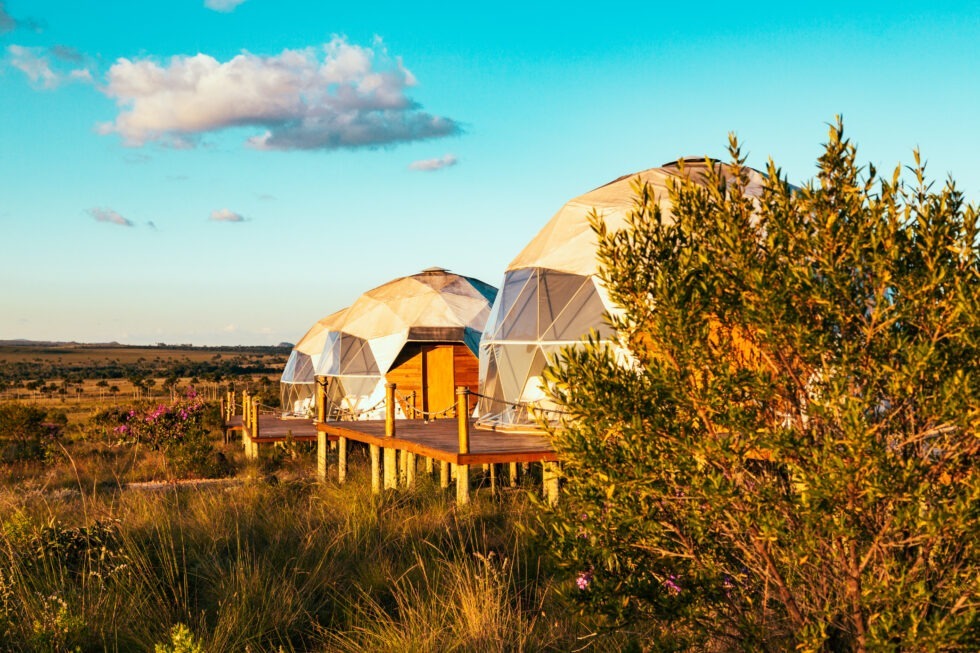
Our entire structure was designed to not cause environmental impacts in the region.
Our stilts protect the soil and do not harm the Cerrado vegetation.
Nothing was cleared during the construction of our geodesic domes.
It is very important for us to be able to share the culture and natural beauties of Chapada dos Veadeiros with the world using sustainable practices.
Bonito/MS
A reference model when it comes to sustainability, Bonito/MS has already been elected 16 times as the best ecotourism destination in Brazil.
In addition to the environmental education proposed by some attractions, some practices adopted by the destination are:
– Control of the number of people on the tours
– Shared transport to attractions
– Sustainable hotels and inns
– Conscientious use of natural resources
– Local business development
Fernando de Noronha/PE
Fernando De Noronha is also a destination known for its concern for the environment and tourists need to pay a preservation fee.
Among the archipelago’s sustainable practices is the Plastic Zero decree, which established a ban on the entry, sale and use of plastic containers and packaging and similar items, including plastic bottles, cups, straws and disposable bags.
Noronha Carbono Zero established that from 2022 no car that emits carbon dioxide will enter the island. From 2030, the circulation of these vehicles will be prohibited.
Serra Gaúcha /RS
Serra Gaúcha offers several options of places for those seeking contact with nature.
Famous for its beautiful landscapes, gastronomy and local culture, Serra Gaúcha has trails, waterfalls, mountains and zip lines to enjoy nature in a sustainable way.
Tips for a Sustainable and Conscious Tourism:
– Take care of the garbage you produce;
– Prioritize the local economy;
– Save water and energy;
– Avoid wasting food;
– Avoid the use of plastics, prefer ecobags and reusable bottles;
– Find out about the local rules and regulations;
– Walk only on the trails. Shortcuts, in addition to being dangerous, degrade the environment.
– Camp only in permitted places;
– Carry a first aid kit;
– Do not scratch stones or tree trunks;
– Do not make bonfires;
– Do not feed the animals, do not hunt or collect species;
– Respect the fauna and flora;
– Be kind to residents and employees of environmental agencies.
– In case of accident, inform the authorities.
– Report environmental crimes.
Also read: how to be ecofriendly without being ecoguilty.


